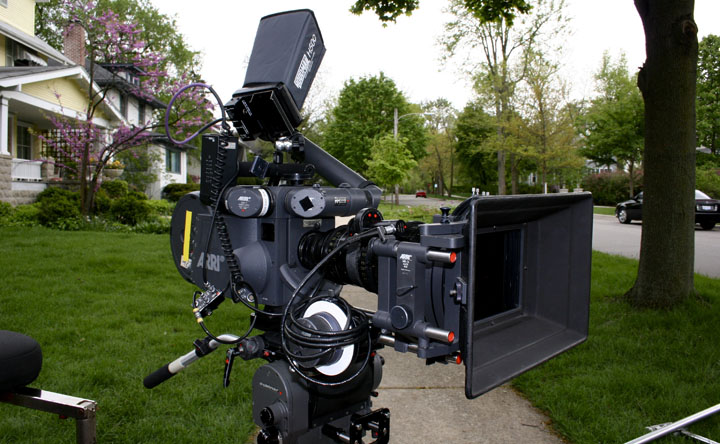
The 15th original Digital Bolex finally gets its day in the snow.
After a long slumber in my camera case, I decided to break out the Digital Bolex for same reason I was one of its original Kickstarter backers: I wanted my incidental home movies to have the quality and aesthetic that I found lacking in camera phones and DSLRs.
I grew up watching my family’s Super 16mm films, loading my dad’s 16mm projector, and learning traditional filmmaking with the 16mm Bolex. Since then I’ve worked with the Arri35b, ALEXA, the RED systems, an assortment of DSLRs like the beloved Canon 1DC, but I wanted to get back-to-basics with just the camera, lens, and me. Before last weekend I had used the Digital Bolex perhaps twice before, but never allowed myself the time or the project to really get to know it.
Working with such incredible high-definition material instills in you a certain hunger for clarity, luster, and tone. I began to develop a taste for types and looks of digital imagery like many cinematographers developed an affinity for traditional film stocks.
I had also begun to feel like like there was too much stuff between me and the subject. The cages, mounts, weights, and monitors all helped the process of making beautiful pictures professionally, but they didn’t feel appropriate for home movies. I wanted something I could lift off the shelf and take along for the ride.
Film production is a great manipulation machine – the sound, color, light, and composition all exist to make people feel things. Despite all the machinations, filmmakers do so much to make their images feel organic and authentic, but I believe that process starts in capturing them. It starts with a photographer and subject.
I often ask myself whether anyone takes home movies like they used to or will our memories be relegated to the hard drives of our iPhones? Will my children be destined to swipe through our Instagram profiles to get a sense of the lives of their parents?

The ungraded, raw image and the graded shot below. I dialed back on the grading a little for final output to better preserve Olive’s skin tones.
It never sat well with me, but perhaps that’s because I’d learned of my family through Kodachrome slides and the hum and warmth of projector. Traditional film was literally an organism: a mixture of light, chemistry, time, and intention. It’s hard to press “delete” on a spool of 16mm film.
I feel that as a byproduct of our digital culture, we treat memories as disposably as the medium in which they are documented.
My investment in the Digital Bolex was to bridge that gap between image quality and memory. How do we not only capture what we see, but communicate how we feel about what we capture as we’re doing it?
I will one day dedicate some sort of pretentious essay to the use of Instagram filters (and my own beloved film burns and light leaks) as ways to communicate feeling and emotion, but I wanted the raw, naked image to be as close to the feeling before I even dreamed of color correction.
The images produced from the 2K sensor of the D16 have always felt strangely honest, putting me an inch closer to how I felt about the things I saw. While I’ll no doubt eventually build the D16 up with its own external monitor and focus puller and add to its simple frame and pistol grip, this was what I saw over the weekend and exactly how I felt about them.
The home movie I envisioned when I first invested in the Digital Bolex finally came true thanks to the camera, the weather, and Tiffany, Olive – and Draper the Goldendoodle – too. They all came alive in this medium.
PRODUCTION NOTES
[column_one_half]
D16 Digital Bolex: Production model no. 15
Glass: 16-35mm (Canon EOS adapter)
Edited and graded in FCPX with Fuji3513 – Rec709 LUT
Music: La grande Marie-José – Au jour le jour (1943)
Location: West Central, Fort Wayne, Indiana



